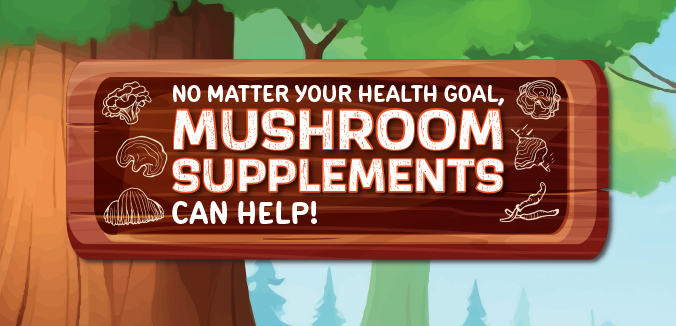


Sign-up for {N}power to get exclusive discounts, newsletters, members-only features, and more!
 Denver - Design District - Alameda and Broadway
Denver - Design District - Alameda and Broadway
368 S Broadway
Denver, CO 80209
United States
 Preferred Store:
Select a Store
Preferred Store:
Select a Store
1. Reishi: The Original Chill Pill
Are daily stresses interfering with your health? Reishi enhances the body’s ability to adapt to stress and promotes healthy, restful sleep. It can revitalize the entire body and support healthy aging.*
2. Turkey Tail: The Master of Immunity
Does your immune system need an MVP? Turkey tail supports a robust immune system. It also contains prebiotic compounds that serve as food for our beneficial gut bugs, supporting a healthy gut microbiome.*
3. Maitake: The Healthy Weight Hero
Ready to kickstart your health goals? Maitake promotes normal blood sugar metabolism, a healthy digestive tract, and helps maintain a healthy weight naturally.*
4. Cordyceps: The Restorer of Health & Vitality
Not performing at your best? Cordyceps boosts oxygen flow and energy production making it fantastic for putting a pep in your step. It also supports exercise performance and a healthy libido. As an additional bonus, cordyceps sustains immune resilience so you can get back to feeling your best.*
5. Shiitake: The Liver Champion
Does your liver or skin need some love? Shiitake promotes liver and immune function. Since healthy skin starts with a healthy liver, shiitake promotes overall skin health as well.*
6. Lion’s Mane: The Brain’s Best Friend
Looking for a natural brain boost? Need focus, memory, or mood support? Lion’s mane is well known for its ability to promote mental clarity, fierce focus, magnificent memory, and overall cognitive function. It also supports a healthy mood.*
7. Chaga: The Gut Nurturer
Who doesn’t want a healthy gut? Because chaga supports the health of the cells that line the gut and a robust microbiome, it is known as the gut nurturer. It also supports shiny, thick, lustrous hair & healthy glowing skin.*
8. Agarikon: The Immune Fortifier
Is it time to give your immune system a helping hand? Agarikon has maximum immune-supporting properties. It contains a spectrum of unique nutrients that help maintain health and wellness, especially when the seasons change.*
*These statements have not been evaluated by the Food and Drug Administration. These products are not intended to diagnose, treat, cure, or prevent any disease.



Sign-up for {N}power to get exclusive discounts, newsletters, members-only features, and more!

